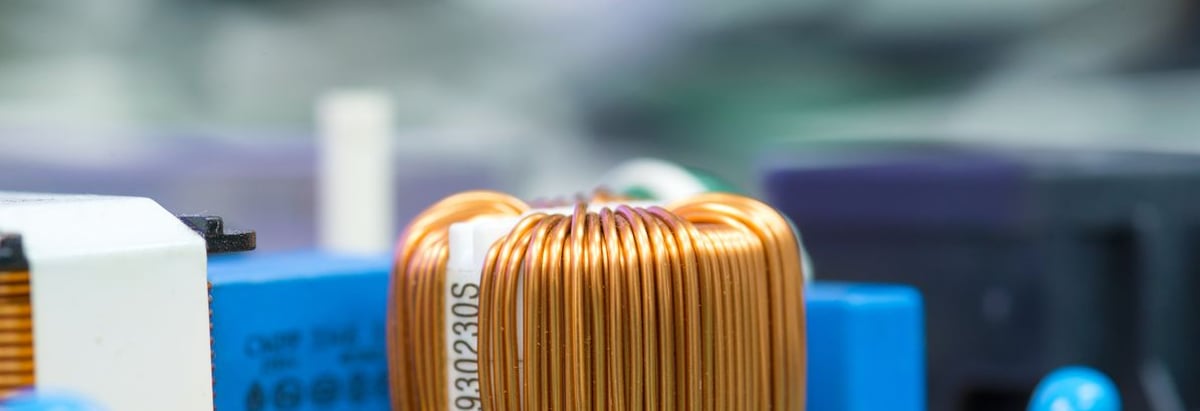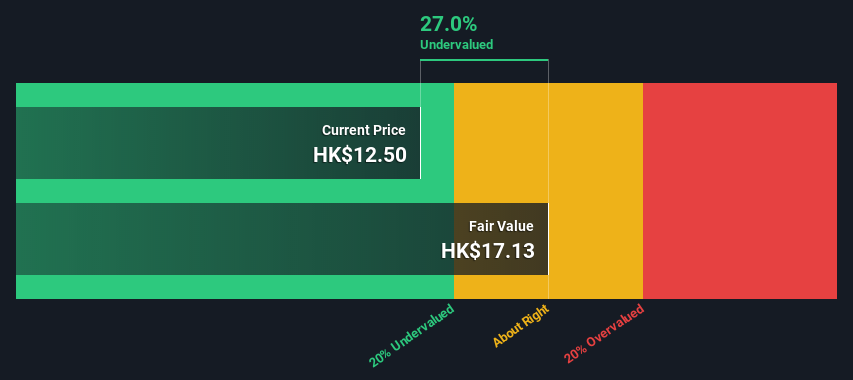- Hong Kong
- /
- Metals and Mining
- /
- SEHK:358
Jiangxi Copper Company Limited (HKG:358) Shares Could Be 27% Below Their Intrinsic Value Estimate

Key Insights
- Jiangxi Copper's estimated fair value is HK$17.13 based on 2 Stage Free Cash Flow to Equity
- Jiangxi Copper's HK$12.50 share price signals that it might be 27% undervalued
- Our fair value estimate is 12% higher than Jiangxi Copper's analyst price target of CN¥15.35
Today we will run through one way of estimating the intrinsic value of Jiangxi Copper Company Limited (HKG:358) by taking the expected future cash flows and discounting them to today's value. We will use the Discounted Cash Flow (DCF) model on this occasion. Before you think you won't be able to understand it, just read on! It's actually much less complex than you'd imagine.
Companies can be valued in a lot of ways, so we would point out that a DCF is not perfect for every situation. If you still have some burning questions about this type of valuation, take a look at the Simply Wall St analysis model.
View our latest analysis for Jiangxi Copper
What's The Estimated Valuation?
We're using the 2-stage growth model, which simply means we take in account two stages of company's growth. In the initial period the company may have a higher growth rate and the second stage is usually assumed to have a stable growth rate. To start off with, we need to estimate the next ten years of cash flows. Where possible we use analyst estimates, but when these aren't available we extrapolate the previous free cash flow (FCF) from the last estimate or reported value. We assume companies with shrinking free cash flow will slow their rate of shrinkage, and that companies with growing free cash flow will see their growth rate slow, over this period. We do this to reflect that growth tends to slow more in the early years than it does in later years.
A DCF is all about the idea that a dollar in the future is less valuable than a dollar today, so we need to discount the sum of these future cash flows to arrive at a present value estimate:
10-year free cash flow (FCF) estimate
| 2023 | 2024 | 2025 | 2026 | 2027 | 2028 | 2029 | 2030 | 2031 | 2032 | |
| Levered FCF (CN¥, Millions) | CN¥6.37b | CN¥6.80b | CN¥7.12b | CN¥7.39b | CN¥7.63b | CN¥7.85b | CN¥8.05b | CN¥8.23b | CN¥8.41b | CN¥8.58b |
| Growth Rate Estimate Source | Analyst x1 | Analyst x1 | Est @ 4.75% | Est @ 3.86% | Est @ 3.24% | Est @ 2.81% | Est @ 2.51% | Est @ 2.30% | Est @ 2.15% | Est @ 2.04% |
| Present Value (CN¥, Millions) Discounted @ 15% | CN¥5.5k | CN¥5.2k | CN¥4.7k | CN¥4.3k | CN¥3.8k | CN¥3.4k | CN¥3.1k | CN¥2.7k | CN¥2.4k | CN¥2.2k |
("Est" = FCF growth rate estimated by Simply Wall St)
Present Value of 10-year Cash Flow (PVCF) = CN¥37b
After calculating the present value of future cash flows in the initial 10-year period, we need to calculate the Terminal Value, which accounts for all future cash flows beyond the first stage. The Gordon Growth formula is used to calculate Terminal Value at a future annual growth rate equal to the 5-year average of the 10-year government bond yield of 1.8%. We discount the terminal cash flows to today's value at a cost of equity of 15%.
Terminal Value (TV)= FCF2032 × (1 + g) ÷ (r – g) = CN¥8.6b× (1 + 1.8%) ÷ (15%– 1.8%) = CN¥67b
Present Value of Terminal Value (PVTV)= TV / (1 + r)10= CN¥67b÷ ( 1 + 15%)10= CN¥17b
The total value, or equity value, is then the sum of the present value of the future cash flows, which in this case is CN¥54b. In the final step we divide the equity value by the number of shares outstanding. Relative to the current share price of HK$12.5, the company appears a touch undervalued at a 27% discount to where the stock price trades currently. Valuations are imprecise instruments though, rather like a telescope - move a few degrees and end up in a different galaxy. Do keep this in mind.

Important Assumptions
We would point out that the most important inputs to a discounted cash flow are the discount rate and of course the actual cash flows. Part of investing is coming up with your own evaluation of a company's future performance, so try the calculation yourself and check your own assumptions. The DCF also does not consider the possible cyclicality of an industry, or a company's future capital requirements, so it does not give a full picture of a company's potential performance. Given that we are looking at Jiangxi Copper as potential shareholders, the cost of equity is used as the discount rate, rather than the cost of capital (or weighted average cost of capital, WACC) which accounts for debt. In this calculation we've used 15%, which is based on a levered beta of 1.819. Beta is a measure of a stock's volatility, compared to the market as a whole. We get our beta from the industry average beta of globally comparable companies, with an imposed limit between 0.8 and 2.0, which is a reasonable range for a stable business.
SWOT Analysis for Jiangxi Copper
- Earnings growth over the past year exceeded the industry.
- Debt is well covered by earnings.
- Dividends are covered by earnings and cash flows.
- Earnings growth over the past year is below its 5-year average.
- Dividend is low compared to the top 25% of dividend payers in the Metals and Mining market.
- Annual earnings are forecast to grow for the next 3 years.
- Good value based on P/E ratio and estimated fair value.
- Debt is not well covered by operating cash flow.
- Annual earnings are forecast to grow slower than the Hong Kong market.
Next Steps:
Although the valuation of a company is important, it ideally won't be the sole piece of analysis you scrutinize for a company. The DCF model is not a perfect stock valuation tool. Instead the best use for a DCF model is to test certain assumptions and theories to see if they would lead to the company being undervalued or overvalued. If a company grows at a different rate, or if its cost of equity or risk free rate changes sharply, the output can look very different. What is the reason for the share price sitting below the intrinsic value? For Jiangxi Copper, we've compiled three fundamental factors you should look at:
- Risks: To that end, you should be aware of the 1 warning sign we've spotted with Jiangxi Copper .
- Future Earnings: How does 358's growth rate compare to its peers and the wider market? Dig deeper into the analyst consensus number for the upcoming years by interacting with our free analyst growth expectation chart.
- Other High Quality Alternatives: Do you like a good all-rounder? Explore our interactive list of high quality stocks to get an idea of what else is out there you may be missing!
PS. Simply Wall St updates its DCF calculation for every Hong Kong stock every day, so if you want to find the intrinsic value of any other stock just search here.
New: Manage All Your Stock Portfolios in One Place
We've created the ultimate portfolio companion for stock investors, and it's free.
• Connect an unlimited number of Portfolios and see your total in one currency
• Be alerted to new Warning Signs or Risks via email or mobile
• Track the Fair Value of your stocks
Have feedback on this article? Concerned about the content? Get in touch with us directly. Alternatively, email editorial-team (at) simplywallst.com.
This article by Simply Wall St is general in nature. We provide commentary based on historical data and analyst forecasts only using an unbiased methodology and our articles are not intended to be financial advice. It does not constitute a recommendation to buy or sell any stock, and does not take account of your objectives, or your financial situation. We aim to bring you long-term focused analysis driven by fundamental data. Note that our analysis may not factor in the latest price-sensitive company announcements or qualitative material. Simply Wall St has no position in any stocks mentioned.
About SEHK:358
Jiangxi Copper
Engages in exploring, mining, ore dressing, smelting, refining, and processing of copper in Mainland China, Hong Kong, and internationally.
Undervalued with adequate balance sheet.


